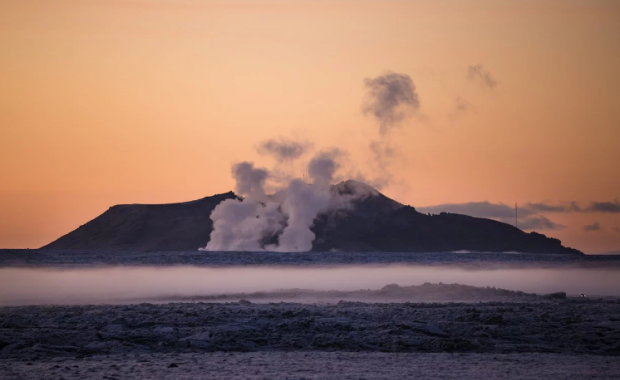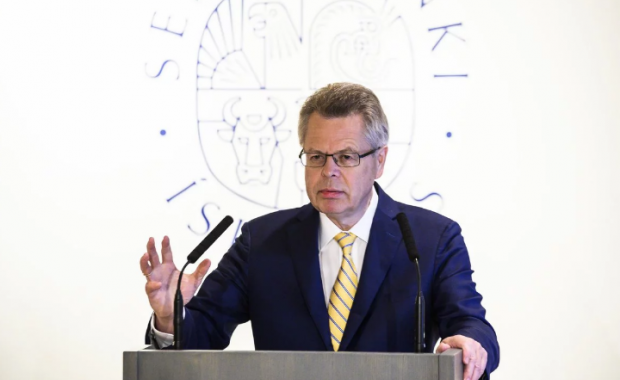With the introduction of Christianity in Iceland in the year 1000, old heathen feasts and celebrations were replaced, or intertwined, with Christian ones. However, many of these old customs were revived during Iceland’s struggle for independence from Denmark in the 19th century. Now, Icelanders celebrate both the old and the new – and so can you. Here’s an introduction to some of Iceland’s many winter feasts.
Þorrablót and the month of Þorri – 25 January-23 February
Þorri is the fourth month of winter, according to the ancient Norse calendar, and began on a Friday between the 19th and 26th of January. In pre-Christian times Icelanders would celebrate Þorri with a great mid-winter feast named Þorrablót, in honour of the Nordic god of thunder, Þór. The tradition was lost soon after Icelanders converted to Christianity.
During Iceland‘s struggle for independence from Denmark in the 19th century, young Icelanders studying in Copenhagen decided to revive the old custom of Þorrablót. The first modern Þorri feast took place in the Danish capital on January 24th 1873.
Some of the dishes served on Þorri might not sound very appetising and include such delicacies as fermented shark, scorched sheep-heads, sour, whey-pickled ram's testicles, and jellied meat of lamb.
Bóndadagur (Husband’s Day) – 25 January
Bóndadagur is the first day of the month of Þorri. There are many old, traditions linked to the month of Þorri, the master of the house, for instance, was supposed to rise before the rest of the household and welcome Þorri with a special ceremony.
Since the mid-19th century, Bóndadagur has become the Icelandic equivalent of Valentine’s Day and wives would cook their husbands a delicious meal to mark the day.
The month of Góa – 24 February
The month of Góa is the penultimate month of winter, according to the old, Norse calendar, and always starts on a Sunday between February 18 and February 25. Just as the master of the house was to rise before the rest of the household and welcome Þorri with a special ceremony, the housewife was to welcome the month of Góa.
Konudagur (Wife’s Day) – 24 February
Konudagur marks the first day of the month of Góa. On this day husbands are to pamper their wives and shower them with gifts and flowers.
Bolludagur (Bun day) – 4 March
Bolludagur was originally a Danish or Norwegian tradition which Icelanders began to celebrate in the late 19th century. Great amount of sweet cream buns, filled with jam and topped with delicious chocolate, are consumed on this day.
Young children will often create colourful wands with which they’ll smack their parent’s bottom while crying “bolla, bolla, bolla!” (“bun, bun, bun”). The parent is then expected to reward the child with a bun – one bun for each blow to the bottom.
Sprengidagur (Blast Day) – 5 March
Sprengidagur is the Icelandic equivalence of Mardi Gras. The Icelandic tradition holds the custom to eat soup made from lentils and vegetables accompanied with salted meat, a dish called “saltkjöt og baunir” in Icelandic. As this is the last day before Lent, a period celebrated by fasting, people would use the opportunity and eat their fill, many to the brink of bursting, hence the name.
Öskudagur (Ash Wednesday) – 6 March
Öskudagur marks the first day of Lent in Western Christianity. The Icelandic tradition surrounding this day is somewhat fanciful; Young women would try and pin little bags filled with ashes onto the back of the boy they fancied without the subject of their infatuation noticing. Young men would try and do the same, but with pouches filled with pebbles.
In later years Öskudagur has to some extent become more like Halloween. School children will dress up in fancy dress and go from store to store, singing in hopes of receiving candy.
With the introduction of Christianity in Iceland in the year 1000, old heathen feasts and celebrations were replaced, or intertwined, with Christian ones. However, many of these old customs were revived during Iceland’s struggle for independence from Denmark in the 19th century. Now, Icelanders celebrate both the old and the new – and so can you. Here’s an introduction to some of Iceland’s many winter feasts.
Þorrablót and the month of Þorri – 25 January-23 February
Þorri is the fourth month of winter, according to the ancient Norse calendar, and began on a Friday between the 19th and 26th of January. In pre-Christian times Icelanders would celebrate Þorri with a great mid-winter feast named Þorrablót, in honour of the Nordic god of thunder, Þór. The tradition was lost soon after Icelanders converted to Christianity.
During Iceland‘s struggle for independence from Denmark in the 19th century, young Icelanders studying in Copenhagen decided to revive the old custom of Þorrablót. The first modern Þorri feast took place in the Danish capital on January 24th 1873.
Some of the dishes served on Þorri might not sound very appetising and include such delicacies as fermented shark, scorched sheep-heads, sour, whey-pickled ram's testicles, and jellied meat of lamb.
Bóndadagur (Husband’s Day) – 25 January
Bóndadagur is the first day of the month of Þorri. There are many old, traditions linked to the month of Þorri, the master of the house, for instance, was supposed to rise before the rest of the household and welcome Þorri with a special ceremony.
Since the mid-19th century, Bóndadagur has become the Icelandic equivalent of Valentine’s Day and wives would cook their husbands a delicious meal to mark the day.
The month of Góa – 24 February
The month of Góa is the penultimate month of winter, according to the old, Norse calendar, and always starts on a Sunday between February 18 and February 25. Just as the master of the house was to rise before the rest of the household and welcome Þorri with a special ceremony, the housewife was to welcome the month of Góa.
Konudagur (Wife’s Day) – 24 February
Konudagur marks the first day of the month of Góa. On this day husbands are to pamper their wives and shower them with gifts and flowers.
Bolludagur (Bun day) – 4 March
Bolludagur was originally a Danish or Norwegian tradition which Icelanders began to celebrate in the late 19th century. Great amount of sweet cream buns, filled with jam and topped with delicious chocolate, are consumed on this day.
Young children will often create colourful wands with which they’ll smack their parent’s bottom while crying “bolla, bolla, bolla!” (“bun, bun, bun”). The parent is then expected to reward the child with a bun – one bun for each blow to the bottom.
Sprengidagur (Blast Day) – 5 March
Sprengidagur is the Icelandic equivalence of Mardi Gras. The Icelandic tradition holds the custom to eat soup made from lentils and vegetables accompanied with salted meat, a dish called “saltkjöt og baunir” in Icelandic. As this is the last day before Lent, a period celebrated by fasting, people would use the opportunity and eat their fill, many to the brink of bursting, hence the name.
Öskudagur (Ash Wednesday) – 6 March
Öskudagur marks the first day of Lent in Western Christianity. The Icelandic tradition surrounding this day is somewhat fanciful; Young women would try and pin little bags filled with ashes onto the back of the boy they fancied without the subject of their infatuation noticing. Young men would try and do the same, but with pouches filled with pebbles.
In later years Öskudagur has to some extent become more like Halloween. School children will dress up in fancy dress and go from store to store, singing in hopes of receiving candy.







